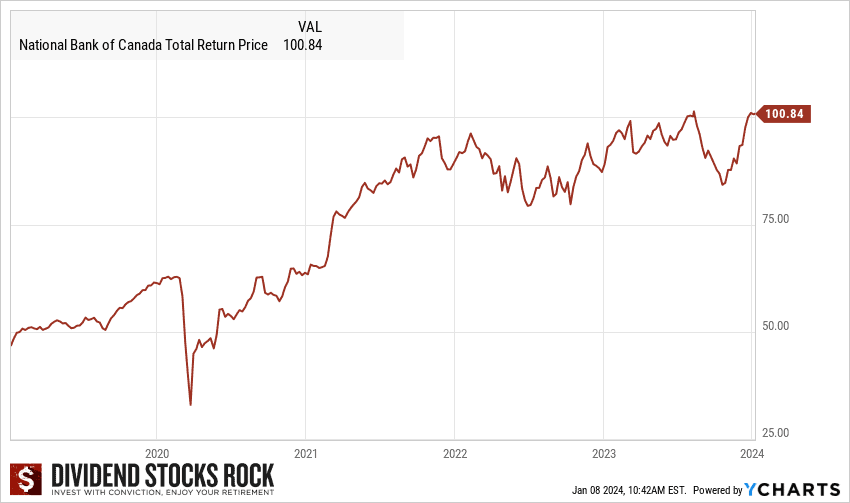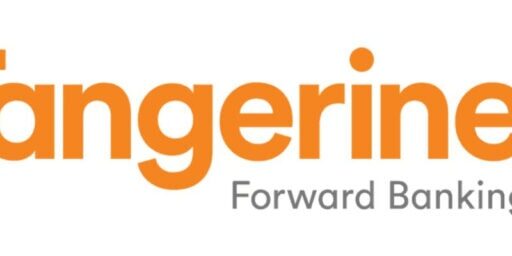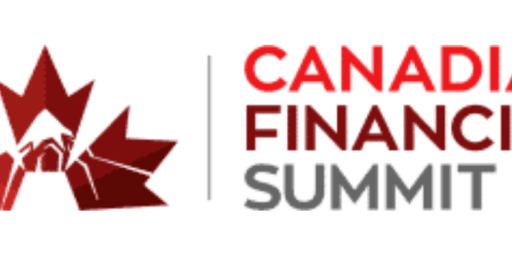Canadian Dividend Kings & Aristocrats – February 2025
Investing in Canadian Dividend Kings (sometimes known as Dividend Aristocrats) tends to come back into fashion when bond yields and GIC rates start to go down. With safer assets generating so little income, dependable dividend payers begin to look more and more attractive. So it’s no surprise that these solid blue chip stocks outperformed the rest of the market over the second half of 2024.
Of course, staying committed to dividends can be a challenge when stocks like Nvidia are soaring. The real test for any dividend investor is sticking to the plan through thick and thin. Click here to jump directly to my 2025 picks.
The first half of the year didn’t look great for our Canadian Dividend Kings relative to some of the tech stocks out there. We were obviously happy to see things pick up quite a bit over the last quarter. As a steady-as-she-goes investor, it’s tough to complain when you’re looking at a 16% gain in a single year.
That’s what the S&P/TSX Canadian Dividend Aristocrats Index did in 2024 – and that’s before we factor in the 4% dividend yield.
With interest rates now substantially lower than they were at the beginning of last year – and trending downward for at least the first part of 2025, sectors such as telecoms, pipelines, banks, and utilities should continue to benefit from decreased interest expenses, plus increased demand for their steady cash flow.
Here’s the thing: companies that have earned Dividend Aristocrat or Dividend King status are no strangers to market ups and downs. They’ve weathered interest rate cycles before, and they’ll do it again. Now, if you’re comparing Canadian dividend stocks to the big-name US tech players – Nvidia, Apple, Microsoft – you’ve got to keep valuations in mind.
These tech giants are undoubtedly solid businesses, and there’s no arguing that they’ll continue to churn out profits. The question is, how much are you willing to pay for that future growth? Because right now, those stocks are anything but cheap.
On the other hand, the “boring” world of Canadian Dividend Kings offers much more reasonable valuations. If the market ends up going sideways for a bit, those consistent dividend payouts could end up looking pretty appealing in hindsight.
& Get Our Exclusive Discount
Top Canadian Dividend King Pick for 2025: National Bank
While I revealed that I liked Sun Life slightly more than National Bank for 2025 over in my best dividend stocks update, Sun Life isn’t a Canadian dividend king as it has only increased its dividend for 8 consecutive years – making it ineligible.
Sticking with National Bank as my official 2025 Canadian dividend king pick isn’t just a matter of “If it ain’t broke, don’t fix it,” (although there is something to that line of thinking). It’s also a case of National Bank just having a lot to recommend it.
Over and over again we see Canadian banks having a difficult time maintaining their return on equity and profit margins when they seek to expand outside of Canada. TD was perhaps the most prominent example over the last year, but BMO’s US acquisitions haven’t been growth vectors either, and the Bank of Nova Scotia’s journey into central and south America has been a bit of a disaster. The more dependable route continues to be to focus on gobbling up market share in the lucrative Canadian oligopoly of banking.
Consequently, National Bank’s merger with Canadian Western Bank is an excellent opportunity. The deal isn’t completely done yet, but it looks like it’s most of the way home! CWB is another Canadian dividend king, and the acquisition allows National Bank to quickly expand outside of its Quebec base. Being able to cross-sell products to new customers on each side of the company is going to be a great source of extra value.
National Bank is still substantially smaller than the rest of the “Big 5”, and so several more years of outperformance on a percentage basis is still quite possible. Finally, the bank is less exposed to Canada’s mortgage market than the rest of the Canadian banks – which is nice little de-risking characteristic I like.
With higher-for-longer interest rates and increased loan-loss provisions slimming back down again over the next couple of years, profit margins should begin to rise back up. I wrote more about the loan loss provisions that the financial institutions were setting aside in my investing in Canadian bank stocks article.
Out of all the Canadian banks, National bank has been the most generous with its dividend raises over the last 3- and 5-year periods – BUT even with all that dividend generosity, it still has a fairly low payout ratio. That bodes well for the long-term, and will result in dividend raises for the foreseeable future.
I predict a 7-8% increase in the dividend for 2025. The bank’s extremely low payout ratio of 40% makes this dividend king a very safe bet to continue to reward dividend-conscious investors.


Canadian banks should continue to benefit from the growing interest rate spreads, and their cautious building of reserves is the exact reason why they are such solid long-term investments.
There are only two things that give me a slight pause with this stock (and it’s key to remember that no stock is ever “perfect”).
1) Word is beginning to get out about what a great run National Bank has been on. Consequently, the current P/E ratio is up over 12, and the dividend yield has dropped to 3.5%.
2) I’m a little nervous about some of the very preliminary separation talk creeping into Quebec’s headlines. I’m keeping a close eye on developments there.
My insights on National Bank – as well as the 2025 Canadian Dividend Kings list below – are based on my own research, but also relied heavily on the advice and tools provided by Dividend Stocks Rock. DSR not only provides excellent written advice, but also a ton of free webinars, and ideal tools for analyzing both the Canadian and American dividend markets.
Read my DSR review for an in-depth look at just why I’m such a big fan of what fellow Canadian Mike Heroux has put together.
& Get Our Exclusive Discount
Here are Mike’s thoughts on where my favourite Canadian Dividend King (National Bank) stacks up against other Canadian dividend stocks for 2024.
Dividend Aristocrats and Dividend Kings Offer Stable Growth
In fact, many studies (such as Vanguard) have proven that dividend growers are likely to outperform the market and do it with less volatility. Dividend growers such as the best Canadian dividend aristocrats will continue to increase their dividend in 2025.
Canadian companies with a long history of dividend growth will generally show a strong business model and robust financials. They have gone through many recessions and never stopped increasing dividend payments. In times of confusion and fear, you can go back and look at how companies went through the past crisis and kept their dividend streak alive.
I use Canadian dividend investing for my leveraged portfolio, significant portions of my RRSP and TFSA portfolios, and our corporate portfolio. We currently collect $78,800 per year in dividends, and you can read more about that in my most recent net worth update if you’re interested.
In the past, I’ve written a number of articles on dividend growth stocks, I’ve never properly categorized them. Here are the most common dividend terms as they relate to the U.S. stock market:
- A Dividend Achiever is a company that has increased its dividend at least 10 years in a row;
- A Dividend Contender is a traded company that has raised dividends for 10 to 24 consecutive years.
- A Dividend Champion is a company that has increased its dividend at least 25 years in a row (regardless if it is part of the S&P 500 or not);
- A Dividend Aristocrat is a company that is part of the S&P 500 and that has increased its dividend at least 25 years in a row;
- A Dividend King is a company that has increased its dividend at least 50 years in a row. The true cream of the crop.
Dividend Aristocrats and Dividend Kings in Canada
Here in Canada, we have a relatively small market and an even smaller list of quality dividend stocks. In a previous article about the top Canadian dividend growth stocks, you will see a number of dividend achievers (10 years+ ), a handful of dividend aristocrats (25 years+), and FINALLY for the first time ever, we have an official “dividend king” (using the US-based definition) in Canada and it’s Canadian Utilities (CU) which officially has a 50-year streak of not cutting their dividends! Congrats CU!
Close behind, you’ll see Fortis is about to meet the criteria for becoming an official dividend king as well. That said, I think it’s important to contextualize that Canada just doesn’t have as many big international companies as the USA, so just because something isn’t officially a “dividend king” in the American sense of the word, doesn’t mean it’s not a worthy, high-quality dividend stock.
As of February 2025
Company | Ticker | Years | Current Yield | 5 year Revenue Growth | Payout Ratio |
Canadian Utilities | CU.TO | 52 | 5.37% | -2.81% | 89.21% |
Fortis Inc. | FTS.TO | 50 | 4.18% | 6.54% | 74.83% |
Toromount Industries Ltd | TIH.TO | 34 | 1.68% | 5.69% | 26.81% |
Canadian Western Bank | CWB.TO | 31 | 2.42% | 6.73% | 38.54% |
Atco Ltd | ACO.X.TO | 30 | 4.29% | -0.61% | 49.77% |
Thomson Reuters | TRI.TO | 30 | 1.35% | N/A | 34.38% |
Empire Company Ltd | EMP.A.TO | 29 | 1.83% | 4.10% | 24.88% |
Imperial Oil | IMO.TO | 29 | 2.49% | 7.72% | 22.81% |
Metro Inc | MRU.TO | 29 | 1.48% | 7.58% | 27.10% |
Canadian National Railway | CNR.TO | 28 | 2.34% | 3.28% | 36.82% |
Enbridge Inc | ENB.TO | 28 | 6.01% | -1.21% | 127.13% |
Saputo Inc | SAP.TO | 24 | 3.26% | 5.13% | 117.36% |
TC Energy Corp | TRP.TO | 23 | 4.89% | 3.10% | 135.70% |
Canadian National Resources LTD | CNQ.TO | 23 | 4.76% | 12.88% | 48.93% |
CCL Industries Inc | CCL.B.TO | 22 | 1.60% | 5.20% | 35.50% |
Transcontinental Inc. | TCL.A.TO | 22 | 5.16% | -1.53% | 63.41% |
Finning International Inc | FTT.TO | 22 | 2.93% | 8.52% | 27.92% |
RB Global inc. | RBA.TO | 21 | 1.27% | 26.78% | 170.38% |
TELUS Corp | T.TO | 20 | 8.17% | 7.25% | 251.01% |
Cogeco Communications Inc. | CCA.TO | 20 | 5.45% | 5.00% | 43.26% |
Cogeco Inc | CGO.TO | 19 | 6.26% | 4.69% | 38.61% |
National Bank | NA.TO | 14 | 3.44% | 9.34% | 40.08% |
??????? (Hidden, click for access) | ??????? (Hidden, click for access) | ??????? (Hidden, click for access) | ?.??% | ?.??% | ?.??% |
Canadian Dividend Aristocrat Definition
While I used the terms dividend achievers and dividend aristocrats for the Canadian stock market in the previous section, I must highlight that the official definition of the Canadian dividend aristocrat differs from the one established in the U.S.
In order to be considered as a S&P Canadian Dividend Aristocrat, the company must have increased its dividend payout every year for five years – Therefore, we are looking at stocks that have a good potential for raising its dividend but still pretty far away from 25 consecutive years.
Dividend Kings List
In a few years, we will be able to have a shortlist of Canadian dividend kings (including Fortis and Canadian Utilities). In the meantime, where do we find these elusive dividend kings? You’ll have to look at the biggest market in the world – the US! In the US, there are 30 dividend kings that have increased their dividend at least 50 years in a row.
Here is a table supplied by Dividend Stocks Rock:
Ticker | Name | Dividend Yield | Market Cap |
JNJ | Johnson & Johnson | 3.06% | 387.98B |
PG | Procter & Gamble Co. | 2.33% | 403.96B |
KO | The Coca-Cola Co. | 2.71% | 306.04B |
MMM | 3M Co. | 2.04% | 74.40B |
LOW | Lowe’s Cos., Inc. | 1.69% | 154.22B |
CL | Colgate-Palmolive Co. | 1.95% | 83.39B |
TGT | Target Corp. | 2.94% | 69.29B |
EMR | Emerson Electric Co. | 1.92% | 63.27B |
HRL | Hormel Foods Corp. | 3.75% | 17.30B |
PH | Parker-Hannifin Corp. | 1.03% | 80.74B |
SWK | Stanley Black & Decker, Inc. | 3.00% | 16.82B |
CINF | Cincinnati Financial Corp. | 2.36% | 21.45B |
DOV | Dover Corp. | 1.08% | 26.15B |
GPC | Genuine Parts Co. | 2.86% | 19.33B |
FRT | Federal Realty Investment Trust | 3.88% | 9.29B |
NDSN | Nordson Corp. | 1.20% | 14.91B |
LANC | Lancaster Colony Corp. | 2.03% | 4.88B |
AWR | American States Water Co. | 2.22% | 3.16B |
CWT | California Water Service Group | 2.09% | 3.16B |
ABM | ABM Industries, Inc. | 1.74% | 3.24B |
NWN | Northwest Natural Holding Co. | 4.83% | 1.53B |
Buy Dividend Stocks Using the Best No Fee Discount Brokers
We constantly review and compare discount brokers with a particular focus on FREE ETFs, so that you can rebalance your portfolio without paying more than you have to. Read about the most popular brokers like Qtrade and Questrade as well as robo-advisors like Wealthsimple and learn how to maximize your savings!
Currently, the best place to buy Canadian dividend ETFs is Qtrade. Not only is it the best online broker in Canada by a fair margin, Qtrade is also the only place where you can buy AND sell ETFs for free.
Here is the same table sorted by yield:
Ticker | Name | Dividend Yield | Market Cap |
NWN | Northwest Natural Holding Co. | 4.83% | 1.53B |
FRT | Federal Realty Investment Trust | 3.88% | 9.29B |
HRL | Hormel Foods Corp. | 3.75% | 17.30B |
JNJ | Johnson & Johnson | 3.06% | 387.98B |
SWK | Stanley Black & Decker, Inc. | 3.00% | 16.82B |
TGT | Target Corp. | 2.94% | 69.29B |
GPC | Genuine Parts Co. | 2.86% | 19.33B |
KO | The Coca-Cola Co. | 2.71% | 306.04B |
CINF | Cincinnati Financial Corp. | 2.36% | 21.45B |
PG | Procter & Gamble Co. | 2.33% | 403.96B |
AWR | American States Water Co. | 2.22% | 3.16B |
CWT | California Water Service Group | 2.09% | 3.16B |
MMM | 3M Co. | 2.04% | 74.40B |
LANC | Lancaster Colony Corp. | 2.03% | 4.88B |
CL | Colgate-Palmolive Co. | 1.95% | 83.39B |
EMR | Emerson Electric Co. | 1.92% | 63.27B |
ABM | ABM Industries, Inc. | 1.74% | 3.24B |
LOW | Lowe’s Cos., Inc. | 1.69% | 154.22B |
NDSN | Nordson Corp. | 1.20% | 14.91B |
DOV | Dover Corp. | 1.08% | 26.15B |
PH | Parker-Hannifin Corp. | 1.03% | 80.74B |
As you can see from the list, some of these names are very recognizable with global brand awareness and long term competitive advantage. Names such as Procter & Gamble, Coke, Johnson & Johnson, 3M, Colgate, and Lowe’s.
You will also notice that most of them show a low dividend yield. The dividend king average yield is 2.74% with an average dividend growth of 6.50%. This shows you that one must pay for the quality. Finally, most dividend growers will not only reward shareholders with dividend increases, but also with steady capital appreciation.
As a disclaimer, I hold the following dividend kings within my RRSP: Procter & Gamble; 3M; Emerson Electric; Coca-Cola; Target; and, Johnson & Johnson. Also, this post is not meant to provide recommendations for your portfolio, but a starting point for your research.
Dividend King Investments for Canadian Retirees
Canadian retirees love collecting stable, dependable Canadian dividends. It makes sense that amongst those who prioritize stability and income flow, Dividend Kings and Dividend Aristocrats are in the highest demand.
In addition to the obvious reasons for retirees to love Canadian blue chip companies with strong balance sheets, there is a bit of a hidden reason as well: the tax advantages. Canadian dividend income is actually taxed at a negative rate until you hit the $40,000-$50,000 range (exact figure depends on which province you live in).
This means that a retired couple can earn close to $100,000 in Canadian dividend income before they pay a dime in income tax! At lower income thresholds, that negative tax rate can actually help offset income tax owing from part-time work or CPP/OAS payments.
Of course, it should be pointed out that one must hold these Canadian dividend stocks outside of their RRSP and TFSA in order to benefit from this tax treatment. It’s also important to understand that this advantageous tax treatment only pertains to Canadian stocks, and not to American or other international stocks. Dividends generated by those companies will almost assuredly be hit with a withholding tax before you get the money in your brokerage account.
Given the tax benefits and relative stability (still more risky than a Canadian GIC) it’s no wonder that Canadian Dividend King stocks are a hit with retirees. It is key to remember though, that diversity is your investing friend. It can be easy to become too focused on one specific type of company within the Canadian market.
Canadian Dividend King FAQ
Canadian Dividend King 2025 Outlook
Investing in Dividend Kings isn’t about chasing fast money through speculative strategies like momentum trading or trying to time the market. Instead, it’s all about picking companies with a proven track record of disciplined management and the operational efficiency required to grow dividends over the long haul.
If you’ve got the patience and are focused on sustainable, long-term competitive advantages, Canadian Dividend Kings are likely to reward you. These companies have shown resilience and growth potential over the long-term, and they benefit from the overall strength of Canada’s economy.
While Canada’s growth isn’t setting any records, the overall commitment to immigration, our relative safety, and our proximity to the massive US market bode well for slow-but-steady progress in the years to come.
If I was going to be concerned about one dividend stock that a lot of Canadian dividend lovers have in their portfolio, it would be Bell (BCE). It’s not that Bell is a bad company, it’s simply that their dividend payout ratio is too high. Their cable division is withering, putting in 5G networks is expensive, and increased competition has led to declining cell phone prices.
I think it’s quite likely we see them freeze their dividend for a few years, and see little-if-any price appreciation as management tries to figure out how to streamline the company and get out of distracting side projects. One thing is for sure, the company can’t go on paying so much more money than they have coming in through free cash flow.
For keeping up with the latest Canadian dividend news – and American Dividend Aristocrats as well – I rely on Mike Heroux’s “Dividend Stocks Rock” platform. His deep analysis and transparency are truly top-notch. Plus, he hosts these really unique webinars for folks where they can ask him any question from the dividend world and he takes them in real time.
This isn’t some slick sales pitch thing, and it’s impressive to watch Mike showcase the breadth and depth of his knowledge in regards to these companies. Click below to make sure you don’t miss his next webinar or timely tip.
& Get Our Exclusive Discount
I've Completed My Million Dollar Journey. Let Me Guide You Through Yours!
Sign up below to get a copy of our free eBook: Can I Retire Yet?











Ft or others im age 78 stongly considering selling off a lot of my individual stocks/Etf’s currently down especially small caps stocks held mainly in Sitrade ($10/trade) and setting up an individual retirement stock prtfl aristocrats based on the DGIR Allstar List for candian aristocrats most with 10yr plus div streaks of incr and with most if not all in a non-registered account But also since DGIR insists on sector diversification and a prtl around 30-35 stocks He supplements about 1/3 in usa stocks and a couple of int’l etf’s – ( I do point out i stil have chunk in gic’s for better sleep) : some questions: should i change brokers at least to this new retirement prtfl before i start and if so to which one as there will be a lot of trades out and ins, estimate at least (80 National bk br has zero commissions while Cibc Edge has these canadian deposit receipts); Do i slice down some of which i hold now in aristocrats and pay some cap gain tax so all holdings equal weighted dollar wise in this new Retirement Prtfl; What is best inexpensive way as to $ and Time wise to track performance of this prtflio separately or for that matter any portfolio that runs on different paramaters?; Pondering as to whether or not to hold some of the USA holdings for this prtfl in my RIF to reduce effect of paying the div withholding tax (not sure if there is a limit on the tax treaty relief for usa stocks)? I may include a good portion of my TFSA but will avoid for usa stocks as i understand tax treaty relief does not apply on the american dividends there). With thanks and thanks for great article
Many many questions here Ronaldo. I’d recommend checking out the Dividend Stocks Rock service and asking Mike some of these in his live webinars. The short version is that I’d definitely look at getting to a cheaper brokerage for sure.
In a few years, we will be able to have a shortlist of Canadian dividend kings (including Fortis and Canadian Utilities). In the meantime, where do we find these elusive dividend kings?
I have a question – as a rookie investor wannabe:
• HOW does one reliably MEASURE the true ROI, (for use at retirement)? What is the meaning of the varying terminology?
• ONE eg.: saw a company with 2% “yield”, 82% gain. What does that mean, in REAL terms?
How does one decide?
Per $100K invested? What is the useful/usable monthly return, at retirement?
Also,
What is the taxation rate at that time, (how is it calculated), when cashed out?
How can one preserve the principal, and still live off the investment?
What is the minimum investment required to capture RELIABLE annual dividend income of $35K + CPI?
When looking at the CDN list, I see immediately the top stock CU. The earnings don’t cover the dividend.. That would be a concern going forward and one should research this a little deeper.
Same goes with the other stocks that don’t cover their dividends with earnings.
I will need to dig a little deeper into CU. Make sure to look at the dividend as a percentage of cash flow as well, as earnings don’t always show the whole picture.
This is an interesting list for dividend increases and tells you a lot about the quality of the companies. I invest in dividend paying companies but put more emphasis on how long they have been paying and total return. For an example during the last recession in 2008 the CDN banks didn’t increase but also didn’t cut their dividends. The best thing I did was hold on to all my investments and ride it out and the results have been very good. (see my blog at dividend-café.com)
Agreed, even during market bear markets, best to hold onto those quality companies and even better, add to them if you have the cash.
Tootsie Rolls! Who would have thought! Thanks for sharing this list :)
Altria $MO recently might be considered a Dividend King though it might not technically qualify.
https://finance.yahoo.com/news/altria-investment-royalty-50th-straight-233100137.html
Hello, How do you invest in US Dividend stocks in your canadian investment accounts? When you purchase the US stock, are the canadian funds converted into USD?
Hi Jenn,
Yes, for my RRSP, I typically convert Cad to USD. Here are some tips on how to save money when doing this conversion:
https://milliondollarjourney.com/low-cost-ways-to-convert-usd-to-cad.htm
Great article! I do like the idea of investing in companies with histories of increasing dividends. This is why I have invested in MCD, AFL, WMT. McDonald’s has increased its dividend every year since 1976!
However, I think sometimes people get too enamored with dividend yield/increases, and fail to consider TOTAL RETURN. That is what really matters, and that is why I’ve shifted most of my additional investments over the years into low-cost index investing (VTI is my favourite). I think index investing is the easiest path to maximizing total return over the long run. Do you agree?
Cheers,
Mr Fundamental
I am on the same page, indexing is much easier, and will give you strong results over the long term. The only except is for early retirees, it’s hard to pass up the temptation of the tax advantages of dividend stocks in a non-registered account.
The US definitely has bigger companies with stronger history of providing returns to investors.
Be careful with the Dividend Aristocrats definition as Canada has one defined by Standard & Poor and it’s adjusted to the Canadian market and requires 5 year of dividend increases with some other rules. The iShare Canadian Dividend Aristocrats follows that rule
Don’t get me wrong, I prefer a 10 year minimum so Dividend Achievers is where I start.
you fail to mentioned anything about DRIPPing the dividend payments. Both broker DRIPS (no partial DRIP or shares) to company DRIP (partial shares allowed but you might have to pay about $50 to do this)